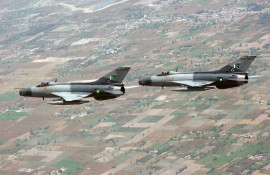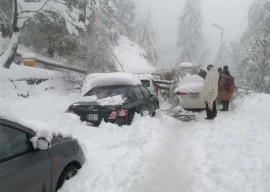
Sources told The Express Tribune that the plan will be discussed with the Iranian authorities in an upcoming meeting in Tehran. Petroleum Minister Shahid Khaqan Abbasi confirmed that the proposal of gas import in the form of LNG was under study and would be discussed with Tehran.
Under the new plan, Iran will convert natural gas into LNG and then export it to Pakistan by using terminal facility of Oman. Already, Iran and Oman have signed an agreement, according to which Oman will purchase around $60 billion worth of natural gas from Iran in the next 25 years, with the project stipulating the laying of a $1 billion gas pipeline across the Gulf to Oman.
Around 50% of the gas, which Iran will export to Oman, will be delivered to Japan, South Korea, and India.
“We may also use Oman’s LNG terminal facility to import gas from Iran,” a source said, adding that Pakistan would not face shipping problems as Oman is close to Pakistan. Another plan is to set up an LNG terminal at Gwadar and laying pipeline from Gwadar to Nawabshah in Sindh, he added.
“This plan will also be discussed with Iran,” the source said, adding that Chinese companies were interested in setting up the LNG terminal and laying pipeline from Gwadar onwards. Officials said Iran had also conveyed to Pakistan that it, too, had some proposals to implement IP gas pipeline amid threats of US and EU sanctions, which would be put on the table in the Tehran meeting.
Published in The Express Tribune, September 16th, 2014.
COMMENTS (5)
Comments are moderated and generally will be posted if they are on-topic and not abusive.
For more information, please see our Comments FAQ



1719319701-0/BeFunky-collage-(10)1719319701-0-165x106.webp)




1735126617-0/Untitled-design-(67)1735126617-0-270x192.webp)


1735025557-0/Untitled-(96)1735025557-0-270x192.webp)











Man need it and its only Imran khan who can take stand and do something unlike these mules who are rulling...
If Oman can import without fear of sanctions so can pakistan. Kickbacks are suspected in this.
Looks like Pakistani hydrocarbon experts in a desperate bid are trying to announce all kind of illogical proposals. It is of common knowledge that cost natural gas dramatically shoots up because of liquefaction, especially if C3 & C4 fractions have been skimmed off. The gas is required to be liquified using high pressure compressors under refrigerated conditions. Refrigeration is required is specifically designed vessels near the plant and while transporting on exclusive LNG shipping vessels. Similar elaborate arrangement is required at the receiving station before it is gasified and redact to be transported as PNG. This definitely is not an alternative to the piped gas.